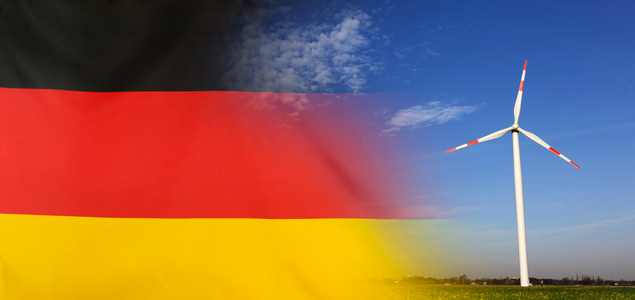
Outside of Japan, nowhere did the Fukushima meltdown have more of an impact than in Germany. Chancellor Angela Merkel’s government had published a policy document outlining its energy transition a mere six months prior in September 2010. Though the Energiewende, as it is known, has its roots in the anti-nuclear movement of the 1970s and in particular a groundbreaking study published in 1980, it was developed in its current form as a policy at the beginning of the 2000s. Nuclear power was to be a means for the country to transition to clean technology. But less than three months after the Japanese disaster, Merkel announced all of Germany’s nuclear power plants were to be shut down by 2022.
On the surface, the country appears to have been successful so far in pursuing the Energiewende’s two other main goals of developing renewable energy sources and decarbonizing the economy by 2050. Indeed, Germany was able to ramp up the share of its electricity supplied by renewable sources from about 20% in 2011 to just shy of 32% in 2016 (it is well on its way to meeting its target of 35% by 2020). But look a little closer, and it becomes clear the Energiewende’s progress is anything but a sure thing.
In a recent paper France Stratégie energy specialist Étienne Beeker has taken such an in-depth look. He concludes that given the current state of affairs and the electioneering discourse, policy makers are likely to be a lot less ambitious in their energy goals following the September 24 federal elections.
Intermittency – the rub
The picture he paints is one of a country with 20th-century power infrastructure thrown into disarray by the intermittency and extremely low marginal cost of renewable energy sources. In effect, like every other country, Germany’s grid was designed for continual energy from fossil fuels, nuclear reactors and hydropower.
What this means is that these traditional – and environmentally harmful – energy sources are needed more than ever as backup when the sun doesn’t shine and the wind doesn’t blow. Case in point, despite having 31.7% of its electricity consumption provided by renewables, Beeker points out fossil fuels still make up 80.0% of Germany’s energy mix.
Coal accounts for just over 40.0% of the country’s electricity production. Moreover, the highly polluting lignite, or brown coal, was used to produce 25.2% of the country’s electricity in 2016 and is responsible alone for roughly a quarter of its total greenhouse gas (GHG) emissions.
Though progress has been made with storing renewable energy, its random nature remains a major problem for power grids. According to the European Commission, meeting its Energy Roadmap 2050 goal of generating 65% of the EU’s energy needs with stochastic sources such as wind and sun would mean a tenfold increase in storage demand.
But current storage solutions are far from up to scratch. Beeker stresses that currently electrochemical batteries remain costly and can’t be used to store energy between seasons (i.e. from summer to wintertime). Another solution – much vaunted in recent years – entails using the excess electricity from renewables to perform electrolysis on water, recouping the hydrogen to be used as a fuel. For the time being, though, it too is not cost-competitive. Furthermore, only about 30% of the captured energy can be stored as hydrogen, compared to a 90% rate of stored energy for batteries.
The random nature of renewable energy further complicates Germany’s pledge to abandon nuclear power by 2022. Providing as it did 14.2% of electricity in 2016, its replacement by renewable power also depends on the storage issue being resolved.
An expensive glut
Beyond storage problems, a mushrooming renewable energy supply has resulted in an electricity market that is quite simply out of whack. On the one hand, German households have had to pay for the massive subsidies that have allowed the country to develop its renewable energy sources so quickly: the price of electricity for end consumers more than doubled between 2000 and 2013. And Beeker details that the average German family pays more than €300 in electricity taxes per year to subsidize the development of renewables.
On the other hand, the supply of renewable energy exceeds demand, leading from time to time to a glut and even negative prices on the wholesale electricity markets. On top of this, energy authorities are often forced to jettison wind and solar resources during periods of excess supply, a process referred to as curtailment. This is because traditional energy sources, particularly coal turbines, can only be turned down to a certain degree, beyond which the stability of the grid becomes an issue. As mentioned, fossil fuel, hydro and nuclear power plants are crucial in providing a constant supply of electricity and keeping the grid in balance. However, they can’t be shut down or ramped up quickly.
Whither Das Auto
In addition to the energy resources themselves, there is the not so small issue of the future of the crown jewel of German industry – the automobile sector. As the country’s main export, it generates some 870 000 jobs directly and accounts for no less than 13% of the country’s GDP. As Herfried Münkler, a professor at Berlin’s Humboldt University, put it in a recent interview with France’s Le Monde newspaper, “German pride was projected [after WWII] onto the economy and in particular the automobile. It became the symbol par excellence of the new German power…”.
But as Beeker writes, Germany’s competitive advantage depends on its skill in manufacturing high-performance engines and gearboxes. Suffice it to say, it is far from clear how the industry will carry out its own energy transition towards electric vehicles. In effect, unlike France’s and the UK’s leaders, Chancellor Merkel has thus far refused to commit her country to abandoning the internal combustion engine. But in the wake of the ongoing ‘dieselgate’ scandal, it is highly likely the sector will ultimately have no choice.
Despite all the problems it has encountered, the Energiewende continues to remain popular among Germans. However, it is clear that if its central goal of transitioning to a near carbon-free economy by 2050, with an 80 to 95% reduction in GHGs, is to be met, massive further investments in adapting grids to renewable energy sources will have to be made.
One thing is certain, a lot is riding on the Energiewende. If successful, it could prove to be a bellwether of how to negotiate the ever-pressing transition to a green economy.





